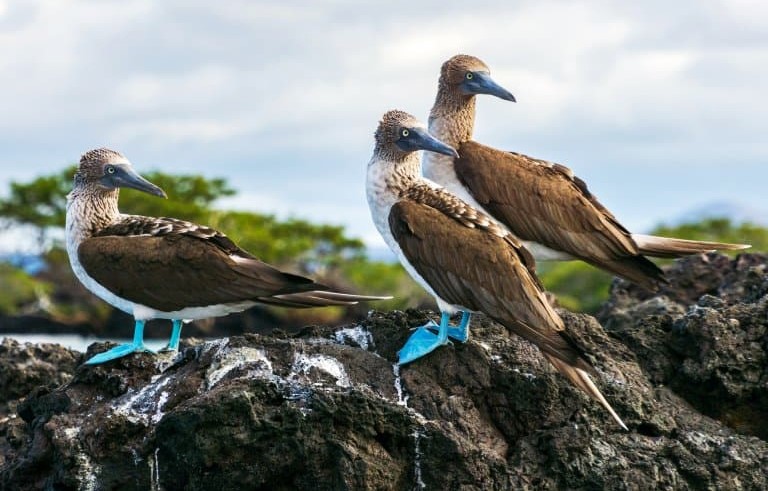The blue footed marine bird nyt, also known as the blue footed marine bird nyt, is one of nature’s most striking and unique avian species. Found predominantly along the Pacific coast of the Americas, from the Gulf of California down to Peru, this bird is famous for its vibrant blue feet and captivating courtship dances. While its distinctive appearance makes it an icon of the natural world, there is much more to the Blue-Footed Booby than meets the eye. In this comprehensive article, we delve into the various aspects of this remarkable bird, exploring its habitat, behavior, diet, and conservation status.The blue footed marine bird nyt (scientific name: Sula nebouxii) belongs to the Sulidae family, a group of seabirds that includes other boobies and gannets. The name “booby” is derived from the Spanish word “bobo,” which means “fool” or “clown.” This is due to the bird’s clumsy gait on land, where its large, webbed feet make walking somewhat awkward. However, in the air and sea, the Blue-Footed Booby is a powerful and agile hunter.
Distinctive Features and Physical Characteristics of Blue Footed Marine bird Nyt
One of the most distinguishing features of the blue footed marine bird nyt is its striking blue feet, which play a crucial role in its mating rituals. The intensity of the blue coloration comes from carotenoid pigments obtained through their diet, primarily from fresh fish. Males with brighter blue feet are more attractive to females, as the color indicates good health and strong genes.
The blue footed marine bird nyt has a wingspan of about 5 feet (1.5 meters) and weighs between 3 to 4 pounds (1.3 to 1.8 kilograms). Their plumage is predominantly white with brown markings on the wings and tail, providing effective camouflage against rocky shorelines. Additionally, these birds have a characteristic long beak, adapted for catching fish with great precision.
Habitat and Distribution of Blue Footed Marine bird Nyt
Blue footed marine bird nyt are primarily found in the Galápagos Islands, but their range extends to other coastal regions, such as the western coast of Mexico, Central America, and down to the coast of Peru. They thrive in these areas due to the nutrient-rich waters of the Humboldt Current, which provides an abundant supply of fish. They are also known to nest on rocky coastlines, small islands, and occasionally on sandy beaches.
The Galápagos Islands, in particular, are home to some of the largest colonies of blue footed marine bird nyt. Here, the birds find an ideal combination of food availability, nesting sites, and limited predation. These conditions allow them to raise their young successfully and maintain a stable population.
Diet and Feeding Behavior
Blue footed marine bird nyt are carnivorous seabirds that primarily feed on fish such as anchovies, sardines, mackerel, and flying fish. They are known for their dramatic plunge-diving behavior, where they dive from heights of up to 80 feet (24 meters) or more, hitting the water at high speeds to catch fish. Their long, pointed bills and sharp eyesight make them highly effective hunters.
The feeding habits of blue footed marine bird nyt can vary depending on the availability of prey. They often hunt in groups, and cooperative hunting can increase their success rate. The synchronized diving of multiple birds creates a spectacle often observed by birdwatchers and nature enthusiasts.
Reproduction and Courtship Rituals
One of the most captivating aspects of the Blue-Footed Booby is its elaborate courtship dance. The males engage in a display where they lift their blue feet high, strut around, and spread their wings to attract females. The brighter and more vibrant the feet, the more likely a male is to find a mate. These dances are accompanied by whistling and honking calls that are unique to each bird.
Once paired, the female lays between 1 to 3 eggs in a shallow nest made of stones or on bare ground. Both parents take turns incubating the eggs and later feeding the chicks. The chicks are covered with downy white feathers, which they lose as they grow older. Parental investment is high, and both parents play a crucial role in protecting the young from predators and providing food until they are ready to fledge.
Conservation Status and Threats
The Blue-Footed Booby is currently listed as a species of Least Concern by the International Union for Conservation of Nature (IUCN). However, this status does not mean that the species is without threats. Environmental changes, such as rising ocean temperatures and overfishing, can significantly impact the availability of their food sources, leading to potential declines in population.
Human activities, including habitat destruction and pollution, also pose risks. The introduction of invasive species, such as rats and cats, can threaten eggs and young chicks. Additionally, climate change could alter their habitat, further challenging their survival. Conservation efforts focused on protecting their nesting sites, regulating fishing practices, and preserving their natural habitats are essential to maintaining stable populations.
Ecological Importance of the blue footed marine bird nyt
Blue footed marine bird nyt play a vital role in their ecosystem. As apex predators in their environment, they help maintain the balance of marine life by controlling fish populations. Their presence also serves as an indicator of ocean health, as changes in their population can reflect shifts in marine biodiversity.
Furthermore, these birds are an essential part of the ecotourism industry, particularly in the Galápagos Islands. Birdwatchers and nature lovers from around the world visit these regions to observe the Blue-Footed Booby’s fascinating behavior and unique appearance. This tourism supports local economies and emphasizes the need for ongoing conservation efforts.
The Cultural Significance of the blue footed marine bird nyt
Beyond their ecological importance, blue footed marine bird nyt have become cultural icons in regions where they are found. They are featured in local folklore, literature, and even as symbols of conservation efforts. Their endearing appearance and engaging behavior make them favorites among wildlife photographers and documentarians, further raising awareness about the need to protect these and other unique species.
Conclusion
The blue footed marine bird nyt is a true marvel of nature, captivating the hearts of people worldwide with its vibrant blue feet and unique behaviors. Understanding this bird’s biology, behavior, and ecological significance is crucial for appreciating its role in the marine ecosystem. As human activities continue to impact the natural world, it becomes increasingly important to support conservation efforts aimed at preserving the habitats and populations of these incredible seabirds.



